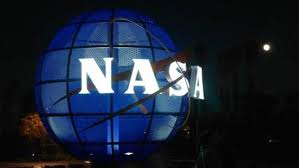
Breaking News
We Americans Need to Dig Deep into Historical Perspective
 A timeless clip of Michael Burry explaining how he used credit default swaps...
A timeless clip of Michael Burry explaining how he used credit default swaps...
 The next financial crisis won't start in a bank lobby. It's already brewing in the market
The next financial crisis won't start in a bank lobby. It's already brewing in the market
Top Tech News
 This tiny dev board is packed with features for ambitious makers
This tiny dev board is packed with features for ambitious makers
 Scientists Discover Gel to Regrow Tooth Enamel
Scientists Discover Gel to Regrow Tooth Enamel
 Vitamin C and Dandelion Root Killing Cancer Cells -- as Former CDC Director Calls for COVID-19...
Vitamin C and Dandelion Root Killing Cancer Cells -- as Former CDC Director Calls for COVID-19...
 Galactic Brain: US firm plans space-based data centers, power grid to challenge China
Galactic Brain: US firm plans space-based data centers, power grid to challenge China
 A microbial cleanup for glyphosate just earned a patent. Here's why that matters
A microbial cleanup for glyphosate just earned a patent. Here's why that matters
 Japan Breaks Internet Speed Record with 5 Million Times Faster Data Transfer
Japan Breaks Internet Speed Record with 5 Million Times Faster Data Transfer
 Advanced Propulsion Resources Part 1 of 2
Advanced Propulsion Resources Part 1 of 2
 PulsarFusion a forward-thinking UK aerospace company, is pushing the boundaries of space travel...
PulsarFusion a forward-thinking UK aerospace company, is pushing the boundaries of space travel...
 Dinky little laser box throws big-screen entertainment from inches away
Dinky little laser box throws big-screen entertainment from inches away
 'World's first' sodium-ion flashlight shines bright even at -40 ºF
'World's first' sodium-ion flashlight shines bright even at -40 ºF
NASA's Galactic Positioning System will enable autonomous spacecraft

Without this system it is not possible to determine a spaceship's location precisely enough to engine-firing just right to go into orbit around a distant moon.
With this technology, autonomous spacecraft could thread a needle to get into orbit around the moon of a distant planet instead of doing a flyby according to NASA scientist Zaven Arzoumanian. A galactic positioning system could also provide "a fallback, so that if a crewed mission loses contact with the Earth, they'd still have navigation systems on board that are autonomous."
When your phone tries to determine its position in space, it listens with its radio to the precise ticking of clock signals coming from a fleet of GPS (global positioning) satellites in Earth orbit. The phone's GPS then uses the differences between those ticks to figure out its distance from each satellite, and uses that information to triangulate its own location in space.
Your phone's GPS works fast, but Arzoumian said the galactic positioning system would work slower —taking the time needed to traverse long stretches of deep space. It would be a small, swivel-mounted X-ray telescope, which would look a lot like the big, bulky NICER stripped down to its barest minimum components.

 The AI money machine!
The AI money machine!

